NIL
Gonzaga to participate in new revenue sharing model
Gonzaga has officially entered the new era of college athletics. Gonzaga and the other eight full-time members of the West Coast Conference — Loyola Marymount, Pepperdine, Saint Mary’s, Santa Clara, Portland, San Diego, San Francisco and Pacific — have decided to participate in the new revenue sharing model that’s been implemented for the 2025-26 academic […]

Gonzaga has officially entered the new era of college athletics.
Gonzaga and the other eight full-time members of the West Coast Conference — Loyola Marymount, Pepperdine, Saint Mary’s, Santa Clara, Portland, San Diego, San Francisco and Pacific — have decided to participate in the new revenue sharing model that’s been implemented for the 2025-26 academic year, according to the College Sports Commission, the new organization in charge of overseeing NIL deals.
Starting July 1, schools that opted into the new revenue-sharing model spelled out in the landmark House v. NCAA settlement are allowed to share up to $20.5 million per academic year directly with their student-athletes. While a majority of institutions aren’t expected to reach that number, those in the ACC, Big Ten, Big 12 and SEC plan on it, with football players likely to receive a majority of the funds.
According to the College Sports Commission — assigned to facilitate and regulate NIL deals in the wake of the House settlement — schools outside the ACC, Big Ten, Big 12, Pac-12 and SEC will have the option to opt in to or out of revenue sharing each year. That’s significant for Gonzaga and the other future members of the Pac-12, as the league’s standing in the college sports hierarchy has been in limbo for roughly a year now. The College Sports Commission’s announcement is the closest the Pac-12 has come to being mentioned as an autonomy conference since the league lost 10 members to the ACC, Big Ten and Big 12, reducing its count to just Washington State and Oregon State for one more season before welcoming seven new schools to the mix in 2026.
Boise State, Colorado State, Fresno State, Gonzaga, San Diego State, Utah State and Texas State join Oregon State and Washington State to form a new-look Pac-12 conference on July 1, 2026. All nine schools opted into the revenue-sharing plan for this season.
Seattle U, which is set to become a WCC member in 2026, has also opted into the revenue-sharing plan heading into its final season as part of the Western Athletic Conference.
The revenue-sharing cap is expected to increase by around 4% — about $1 million — each year, according to the National Conference of State Legislatures, ending at an estimated $32.9 million in 2034-35.
MORE GONZAGA NEWS & ANALYSIS
NIL
Tyran Stokes Could Reshape Gonzaga’s Identity in the NIL Era
When reports surfaced that Tyran Stokes, the No. 1 recruit in the class of 2026, is expected to take an official visit to Gonzaga, the college basketball world took notice. Since the recent House settlement and the legalization of direct revenue sharing, schools without football programs (and without sprawling athletic departments) are newly positioned to […]

When reports surfaced that Tyran Stokes, the No. 1 recruit in the class of 2026, is expected to take an official visit to Gonzaga, the college basketball world took notice. Since the recent House settlement and the legalization of direct revenue sharing, schools without football programs (and without sprawling athletic departments) are newly positioned to compete for elite talent that had in the last five years or so been reserved for schools with a large enough donor base to pay for their services. The revenue-sharing model directs more institutional support to athletes across all sports, giving basketball-first programs like Gonzaga the financial firepower to recruit top-tier players without competing against football for resources.
This is a program that has landed five-stars, developed lottery picks, and earned No. 1 seeds in the past. But the economics of the NIL made it increasingly difficult of late for basketball-first schools to operate in the same recruiting tier as revenue-heavy powerhouses. Stokes’ interest (and that of other top recruits currently being courted by the Zags) suggests that Gonzaga’s development model now has the economic allure to attract players previously boxed out and earmarked for Power-5 schools.
Incoming HS Senior Tyran Stokes had a Triple Double, Playing in Fiba U19 vs Jordan today..
19 PTS (9-11 FG)
11 REBS
10 AST
7 STLSWhat college would you like to see him at after his SR season… pic.twitter.com/uJ9sTKh6Kg
— Frankie Vision (@Frankie_Vision) July 2, 2025
So, How Good Is He Really?
Well, he’s the top recruit in the country for very good reason. Physically, he’s built like a tank, six-foot-eight, somewhere between 235-245 lbs., seven-foot wingspan, and an explosive vertical leap. He certainly doesn’t look it, but the dude must be built out of cannonballs and moon rocks. Imagine if Michael Ajayi somehow put on 20 lbs of muscle. That’s Stokes. Offensively, he’s a downhill playmaker who finishes through contact, rebounds aggressively, and finds teammates in space. He averaged 21 points, 9.3 rebounds, and nearly 4 assists last season for Notre Dame High School in California. He then followed that up with a starring role for Team USA, where he became the first player in U19 history to record a triple-double and averaged 12.2 points in just 18 minutes per game. His EYBL numbers back it up too—20 points, 8.3 boards, and top-ten scoring across the entire circuit. Every level he touches, he produces.
Defensively, Stokes is versatile, handsy, and aggressive. He moves well laterally for his size, can wall up against slashers, and switches comfortably across positions. His energy rarely drops, and his rebounding is elite for a wing. If you’re a coach, you can plug him into almost any system. If you’re a scout, you’re watching the jumper. That’s the one real question left. He shot just over 30% from three last season, and his free-throw numbers (mid-60s) suggest the touch isn’t all the way there. But the mechanics are clean, the volume is increasing, and the upside as a league-average shooter is very real.
Still, what makes this visit to Spokane so significant isn’t just the talent on tape. It’s who’s calling. Besides Gonzaga, Stokes has already been courted by Kansas, Kentucky, Oregon, USC, and Louisville (his hometown). He’s seen Allen Fieldhouse. He’s visited Rupp. He’s played for Tommy Lloyd on Team USA (and if you like playing for Tommy, wait til you play for his mentor and all-time great basketball mind Mark Few).
These are destination programs that usually close on players like Stokes. So why is Gonzaga still on the list?
The answer starts with fit. And it ends with what the program has quietly become: a landing spot for elite players who see Spokane as the most direct pathway to the NBA. And with the program’s pending move to the Pac-12 and a rapidly shifting NIL structure post–House settlement, the gap between Spokane and the so-called Blue Bloods is closing faster than anyone expected.
Why Stokes Fits Gonzaga
Few prospects in recent memory would arrive to Gonzaga with the physical readiness, big game experience, and upside that Stokes already possesses. In terms of size he’s just fine pounds and a couple inches shy of Graham Ike, but he’s lethal in transition and facilitates floor spacing from the wing. His unique blend of force and feel would instantly thrive within Gonzaga’s high-IQ, movement-based offense, especially with a veteran floor-marshal like Braeden Smith running point.
In terms of development opportunities for Stokes, Gonzaga gets players to the pros, yes, but more importantly, it equips them with the coachability, versatility, and physical tools necessary to keep them around in the league. It’s why NBA GMs now view Gonzaga in the same light as Kentucky and Duke–a professional finishing school that develops character, professionalism, and a team-first mindset in tandem with athletic performance.
For a player with Stokes’ ceiling—and the national attention that comes with it—Gonzaga offers something rare: a grounded, basketball-first community that treats their players as more than their market value. It’s a place where the pressure to succeed is met with support, where expectations are matched by belief, and where becoming a pro begins with becoming the kind of person who can handle it.
Why Gonzaga Can Now Compete for Stokes
Under the new revenue-sharing model, Division I schools can allocate up to $20.5 million per year to athletes. At football-first schools, that sum gets carved up across sprawling rosters, athletic departments, and compliance operations. But Gonzaga operates with single-sport precision. That gives Gonzaga the ability to direct a larger share of available revenue toward a smaller number of players, with fewer trade-offs and no internal competition for resources.
In practical terms, that means a player like Tyran Stokes could command more direct, structured compensation at Gonzaga than at any other school currently recruiting him. His visits have included Louisville, Kansas, Kentucky, Oregon, and USC—all high-major programs with football obligations that absorb a meaningful share of institutional funding. Gonzaga stands alone in that group: the only school without a football program, and therefore the only one capable of consolidating its revenue-sharing resources entirely around men’s basketball. That distinction is vital in an era where compensation is legal and expected, Stokes’s potential commitment to Gonzaga would quite literally be proof of concept that the new revenue-sharing model can preserve parity across conferences in the NIL era.
Final Thoughts
Tyran Stokes is a program-shaping talent—physically imposing, instinctually polished, and already equipped with the poise and processing speed that translate to the next level. His recruitment reflects that. But Gonzaga offers more than opportunity. With no football program, a unified donor base, and a basketball identity that has produced durable, high-character professionals, the program now occupies a rare position in the post-House era: fully resourced, culturally grounded, and built around player development in its fullest sense. Somehow, Gonzaga can not only compete for players like Stokes, it might have the strongest pitch for his eventual commitment. Stokes would be Gonzaga’s second No. 1 overall recruit, joining a short lineage that begins and ends with Chet Holmgren—and we’ve already seen how well that trajectory holds up in the league. Gonzaga can give Stokes the platform to rise, the community to stay grounded, and the space to grow into everything his future already promises.
Although Kentucky seems to be gaining ground as the frontrunner for Stokes’ commitment, the stink of the Calipari era still clings to Rupp like cheap cologne: loud, sweaty, and impossible to ignore. Mark Pope has done his best to exorcise the place, but no amount of holy water or leadership-summit charisma can scrub out a decade of ego, turnover, and early tournament flameouts. For most college hoops fans, the Wildcats still play the villain, and his potential commitment to Kentucky could feel to Louisville fans in his own hometown like seeing the pride of their city held up as proof that the University of Kentucky still runs the state.
Under the House settlement, Kentucky and Louisville’s NIL revenue will be divided across every varsity sport. That includes massive football programs with constant overhead and endless booster expectations. At Gonzaga, the entire athletic department is built around the long-standing success of its basketball program alone. The money should be substantial, the exposure is guaranteed, and the NBA outcomes are proven. For a player like Stokes, the choice should be a clear one.
NIL
Azzopardi Listed on Shrine Bowl 1000 Watchlist
Story Links MOSCOW, Idaho – Idaho Vandals offensive lineman, Nate Azzopardi, was named to the Shrine Bowl 1000 Watchlist, the East-West Shrine Bowl announced on Monday. The watchlist recognizes the top 1,000 players who are eligible for an all-star game in college football. Azzopardi is one of eight players from the Big Sky […]
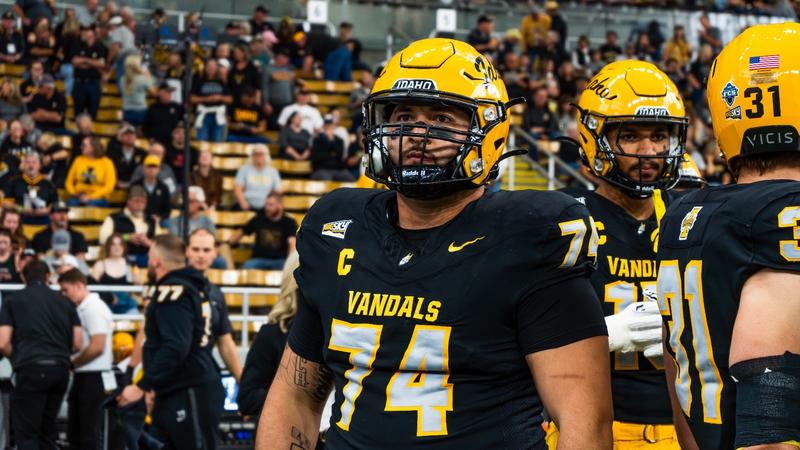
MOSCOW, Idaho – Idaho Vandals offensive lineman, Nate Azzopardi, was named to the Shrine Bowl 1000 Watchlist, the East-West Shrine Bowl announced on Monday.
The watchlist recognizes the top 1,000 players who are eligible for an all-star game in college football. Azzopardi is one of eight players from the Big Sky Conference, and one of 50 players from an FCS school to appear on the list.
Azzopardi has appeared in 26 games for the Vandals over the past two seasons and was named a team captain prior to the 2023 season. Having played his entire career with the Vandals, the Pacifica, Calif. native has seen action in more than 2,000 snaps and, over the course of his career, has developed into one of the best offensive linemen in FCS, earning an elite 87.7 pass-block grade from Pro Football Focus last season. He also represented the Idaho Football team along with Head Coach Thomas Ford and defensive lineman Sam Brown last week at Big Sky Kickoff in Airway Heights, Wash.
The East-West Shrine Bowl provides many of the top NFL prospects the chance to showcase their talents and abilities on a big stage, all while supporting the mission of Shriners Children’s. This year, the East-West Shrine Bowl will take place at Ford Center at the Star in Frisco, Teas, on Jan. 27, 2006.
The Idaho Vandals report for fall camp tomorrow, July 29, and have their first fall practice on July 30. Idaho kicks off its season on August 30 against Washington State. That game can be seen on The CW.
SOCIAL MEDIA: Stay up to date with everything happening with the Vandals by following them on Facebook, Instagram, and X.
TICKETS: Season tickets, mini plans, and single-game tickets can be purchased here or by calling the Idaho ticket office at (208)885-6466.
NIL
Q&A: ACC Commissioner Jim Phillips on growth, change in women’s college basketball
CHARLOTTE, N.C. — Last week was a busy one for Jim Phillips. As he enters his fifth year as the commissioner of the Atlantic Coast Conference, he’s had to grapple with a rapidly changing landscape in college sports. NIL has transformed recruiting, the transfer portal has changed roster management, and conference realignment driven by revenue […]

CHARLOTTE, N.C. — Last week was a busy one for Jim Phillips.
As he enters his fifth year as the commissioner of the Atlantic Coast Conference, he’s had to grapple with a rapidly changing landscape in college sports. NIL has transformed recruiting, the transfer portal has changed roster management, and conference realignment driven by revenue from media rights deals for football has sparked some restlessness and uncertainty.
Advertisement
Under Phillips, the ACC has largely been able to weather those storms. The 2024-25 seasons were the first with Cal, Stanford and SMU as full members, and the Mustangs made the College Football Playoff. The ACC also settled lawsuits with Clemson and Florida State, ensuring the short-term future of the the league.
Across Phillips’ tenure as commissioner, the ACC has also been incredibly successful in a wide variety of women’s sports. Just take a look at the 2024-25 season. The ACC captured national championships in women’s soccer and women’s lacrosse, both won by North Carolina. The Final Four in women’s soccer was essentially an ACC invitational with the Tar Heels, Duke, Stanford and Wake Forest making the national semifinals. In volleyball, two ACC teams, Louisville and Pitt, made the Final Four. In women’s basketball, eight ACC teams made the NCAA Tournament and four of them hosted opening-weekend games as top-16 seeds. Nine ACC teams received bids to the NCAA softball tournament, the second-most of any conference.
Between his state-of-the-conference address on Tuesday and the media frenzy that followed around new North Carolina coach Bill Belichick on Thursday, Phillips carved out some time to talk with SB Nation about all things women’s sports:
This conversation has been lightly edited for brevity and clarity.
How do you think the House Settlement — which brings an increase in scholarships and changes to roster sizes — will impact women’s sports, and is there any concern about that?
Phillips: “I’m very excited about this — the change that’s been agreed upon by the plaintiffs and the defendants that now allows more scholarships to student athletes. For our men and for our women to now have those scholarship caps lifted, it will only provide more opportunities and provide more funding for our student-athletes in our Olympic sports. The rev share and the NIL piece of this thing, I don’t think anybody knows just yet. But what I would say, for our conference, I know that our schools are committed to continuing to support broad-based programming at a incredibly high level. This conference, for 73 years, has been a leader when it comes to opportunities for women and Title IX and broad-based programming. We have 15 women’s sports and 13 male sports. So, I think early signs are, with these changes and the roster limits and scholarships and some of those things, as well as some revenue now directly benefiting student athletes, we’ll be in a good place.”
Advertisement
To stay with House and rev share for a moment, it feels like — across the Power 4 — football is going to get a lot of money, men’s basketball is going to get a lot of money, and it feels like that third piece of the pie for a lot of schools is going to women’s basketball. Has there been any talk about a minimum spending number for revenue sharing for women’s hoops to keep the ACC at the top of that sport?
Phillips: “So, we’ve not done anything relative to a mandate or saying, ‘you have to do this,’ for a certain amount of investment. Our presidents and chancellors, athletic directors and senior women’s administrators have all been unified in the direction of supporting women’s basketball… We recently went to a distribution model where a portion of our revenue at the ACC that would go to success in football and in men’s basketball. But we did not pass that until we also agreed that if women’s basketball created the opportunity for units to be given that we would also do the same thing with our distribution of revenue based on athletic success in those three sports. I’m really proud of that. That was really driven by our presidents and chancellors and obviously supported highly by our athletic directors. So, we’re there, distributing additional money for those teams that have had really good seasons. That, to me, is a clear indication that you’re rewarding those that are investing. And so the idea is, can we continue to push forward and invest, and invest more in women’s sports, and in this case, women’s basketball? Because not only is it the right thing to do, but there’s a tangible financial benefit for you doing so.”
Right. Because of the ACC’s success initiative, there’s an incentive to spend money on women’s basketball and be good at it.
Phillips: “Absolutely. You said it well.”
Advertisement
To stay on units for women’s basketball, I think there are some coaches who have some buyer’s remorse on the TV deal with ESPN, because women’s basketball viewership is booming, but their tournament is lumped in with a bunch of others in this package. Dawn Staley is someone who has called for ESPN to come back to the table and renegotiate. Do you think that’s even possible? And do you think women’s basketball is ready for it’s own TV deal?
Phillips: “You know, the NCAA is led by a tremendous president (Charlie Baker) who negotiated the deal. I don’t have the figures, but I know the deal was substantially larger than it was last time. I’m sure they tried to get every dollar they could from our TV partner, ESPN, and that everybody felt good about it based on what the what the value of women’s basketball was at that particular time. I don’t think there’s ever a TV deal that you have, that you don’t go back and wish maybe you had a little bit more. I would think that as we watch what happens in the next couple years that Charlie would, you know, likely reengage with ESPN. I really respect all of those comments that I hear, not only from Coach Staley, but others as well. These are amazing women in the game, and men coaches as well, and they should continue to advocate for additional support. That’s why we’ve made the strides that we’ve made. But we still have a ways to go, and we don’t want to just be complacent about it, or say that there’s not more work to be done, because there is.”
The women’s basketball tournament has had this double-regional format for a few years now. This past season, we had some coaches like Geno Auriemma, Kim Mulkey and Vic Schaefer loudly complain about this format. Do you have any opinion on four regionals versus two and what’s better for the sport?
Phillips: “To me, as stewards of the game, we owe the membership and the great game of women’s college basketball to continue to have an assessment on that. And I totally understand what they’re saying, because I have been around long enough to see it… But the game is growing. And similar to my last answer, I don’t think you can sit idle when you’re trying to nurture and develop and continuing to grow the game. These are pivotal moments. We should look at it with no predetermined outcomes and see what’s right. Because it would be great if we could get to the point where we did go to more sites and spread the game around even more. But I know that’s delicate, because it is based on some financial stuff, and it is based on how many fans would attend, and some of those things. We want our student athletes to have great experiences and to play in sold out arenas. And we’re moving in that direction. So we’ve made progress, but again, I think there’s still some more work to do.”
Advertisement
The ACC women’s basketball tournament is going to the metro Atlanta area this season. There was a couple of different cities in the mix for the bid. In 2027, the tournament is in Charlotte. Could you see the women’s tournament rotating through a few different host sites like men’s tournament does now?
Phillips: “I don’t want to say that we’re at that point, but yes, we wouldn’t have taken it out of North Carolina if we weren’t interested in really seeing what the response will be. In this particular case, it’s what will be the response of the Greater Atlanta area? I think it’s healthy… If we can grow the game, if we can get into different markets, that only helps this league, it helps those student-athletes, coaches, universities, and the rest of it. So, I’m very excited about trying this out, and no one knows how it’s going to go until we go through it. We’ve gotten great support from from the group down in Atlanta. They’re excited about it.”
The other two women’s sports that seem to be booming and growing in viewership and audience are volleyball and softball. How can the ACC capitalize on that growth?
Phillips: “I’m really proud. And credit again to our presidents, chancellors and athletic directors. These have been campus decisions to support those programs. We try to provide the funding as best we can. It’s the school’s dollars, and they do what they see as best. So when you look at volleyball and where we’ve been, that’s been a wonderful thing to see. It’s been Pitt, Louisville, Georgia Tech, SMU, and it’s growing. And in softball, it’s the same thing. We’ve had Florida State, a historic program, but Clemson and Duke — those are newer programs that have gotten into the NCAA Tournament and have really done well. So, I think you’re going to see a strong continuation of that, and I’m proud of our coaches that are recruiting exceptional talent in those two sports, volleyball and softball… Part of it too, I should say, is they’ve really had great templates to follow when you think about the history of this conference in soccer and lacrosse and field hockey and others.”
Advertisement
The NCAA recommended adding flag football to its Emerging Sports for Women program. We’ve had a handful of Division I schools start varsity teams, in addition to a bunch more at the Division II and III levels. Is the ACC watching this? Are there presidents talking about adding it as a sport?
Phillips: “We are watching. We’ve had a few preliminary conversations, but nothing of substance. I think we’re all kind of watching what’s happening with the House Settlement and NIL. The focus has really been on implementing that, trying to do the very best we can for all of our student-athletes with additional scholarships, different additional revenue. So, we haven’t really had the proper time to really explore what’s happening in women’s flag football.”
NIL
SCOTUS Didn't Legalize NIL in Alston Decision
Michael McCann, Associate Dean, Professor of Law and SELI Director, UNH Franklin Pierce School of Law and Visiting Professor at Harvard Law recently wrote an article in Sportico titled “There’s a Common Misperception About the Supreme Court and NIL.” Its conclusion is that “one of the great sports law misunderstandings in college sports is that the US […]

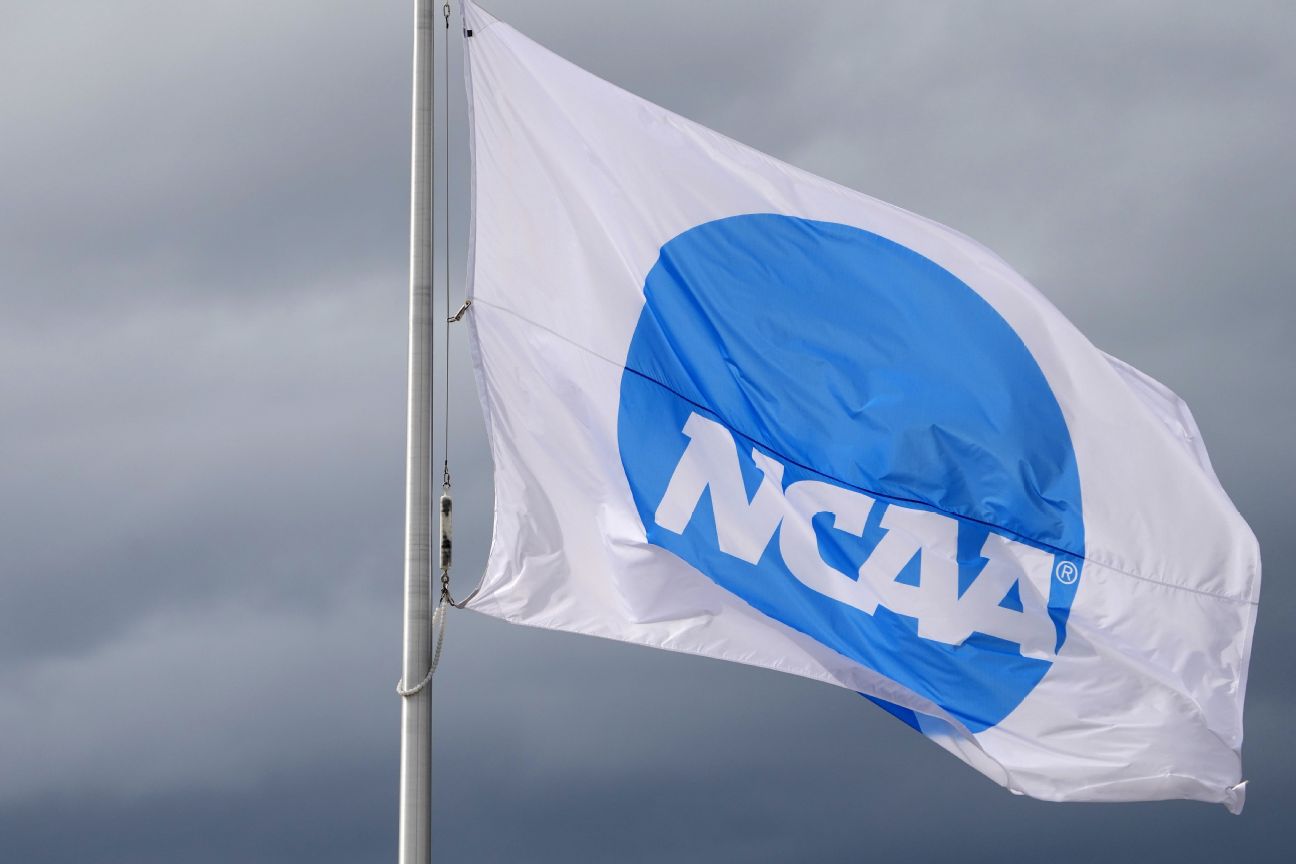
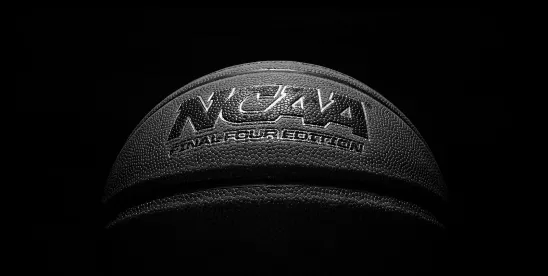
Michael McCann, Associate Dean, Professor of Law and SELI Director, UNH Franklin Pierce School of Law and Visiting Professor at Harvard Law recently wrote an article in Sportico titled “There’s a Common Misperception About the Supreme Court and NIL.” Its conclusion is that “one of the great sports law misunderstandings in college sports is that the US Supreme Court made NIL possible through its ruling in NCAA v. Alston (2021).”
But the US Supreme Court in Alston v. NCAA specifically refused to block the NCAA rules which prohibit pay for play, and McCann’s article steps through that conclusion.
The repeated misstatement of the Alston holding prevents sports conferences and university athletics departments from making reasoned decisions based on what is and is not allowed under the law.
The most shocking misstatement of the Alston holding occurred last week by a federal district court judge in Nevada who held that “in Alston, the Supreme Court held that the NCAA violated federal antitrust law by restricting the compensation student-athletes could receive in exchange for their athletic services,…” Cortez Braham, Jr., v. National Collegiate Athletic Association, Case No. 3:25-Cv-00253-MMD-CSD (July 17, 2025 at 8).
When a party, an opponent, a judge does not know that the US Supreme Court specifically allowed NCAA prohibitions against pay for play in its latest seminal case, conferences and athletics departments may yield protections under the law that they need not cede.
And when lawyers are misstating, and judges are misapplying, the most basic case law governing college sports, conferences and universities require partners who can assist them with not only fighting and interpreting legal matters, but also with shaping the legal landscape itself. Standing up for one’s rights does not make one a bad conference or a bad athletics department. That is the minimum a college or university and their fans should expect.
One of the great sports law misunderstandings in college sports is that the U.S. Supreme Court made NIL possible through its ruling in NCAA v. Alston (2021). The reality is that Alston had nothing to do with NIL or even compensation for playing sports.
NIL
Bailey Named to Maxwell Award Watch List
Philadelphia, PA. – NC State quarterback CJ Bailey has been named to the 2025 Maxwell Award Watch List. Today, the Maxwell Football Club announced its watch list for the 89th Maxwell Award, which is presented annually to the most outstanding player in college football. Bailey is one of 80 college football players named to the […]
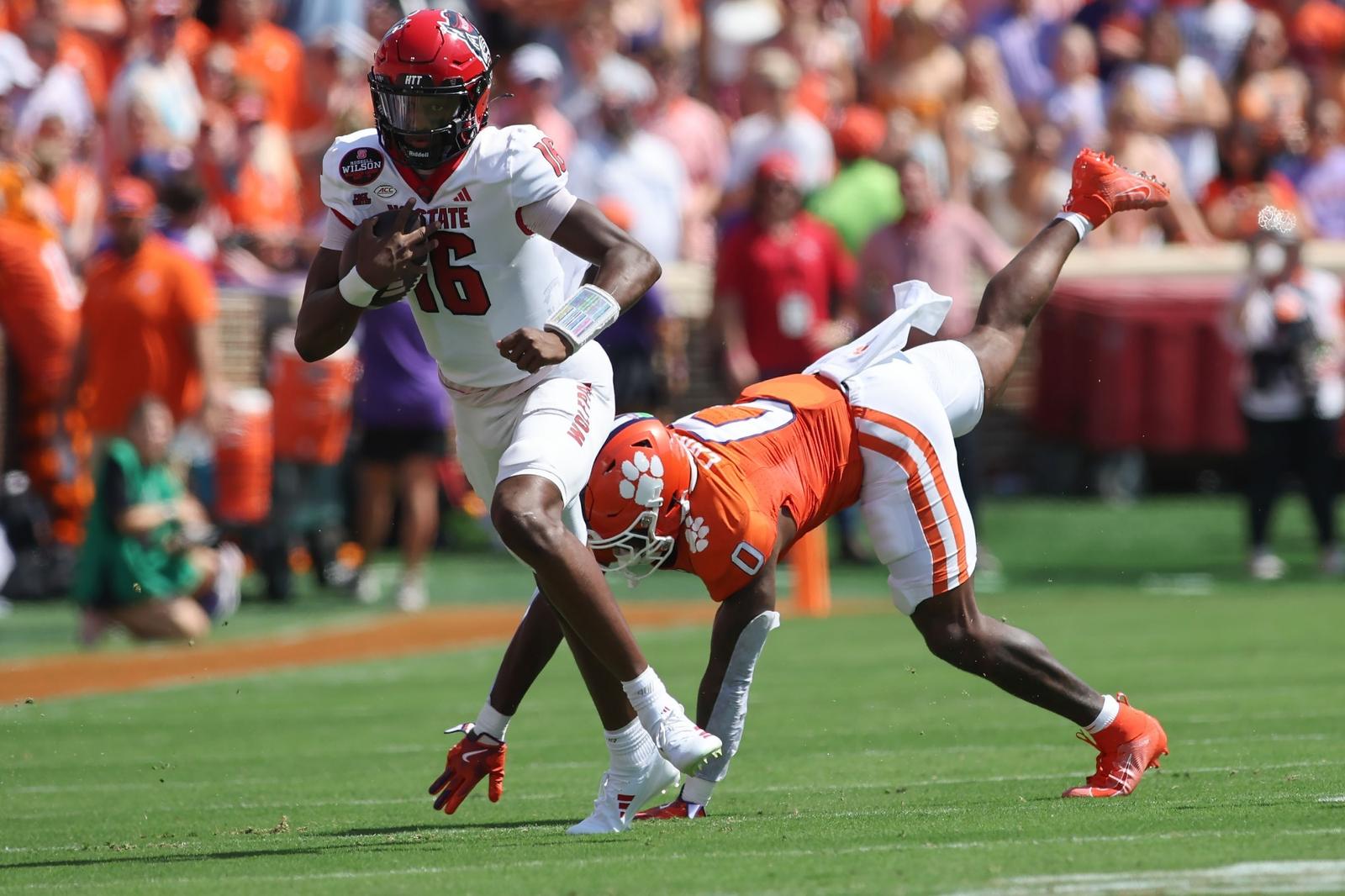
Philadelphia, PA. – NC State quarterback CJ Bailey has been named to the 2025 Maxwell Award Watch List. Today, the Maxwell Football Club announced its watch list for the 89th Maxwell Award, which is presented annually to the most outstanding player in college football.
Bailey is one of 80 college football players named to the list and marks the second straight year the Wolfpack has had a quarterback named to the prestigious watch list, following Grayson McCall last season.
As a freshman in 2024, Bailey was called into action earlier than expected but quickly became one of the top freshmen in the country and top performers in school history. The Miami, Fla. native started nine games and ranked eighth in the ACC in total offensive touchdowns with 22.
Totaling 2,413 passing yards, he ranked second nationally among true freshmen in the category and totaled 17 touchdowns with a passing efficiency of 143.97. His 17 touchdown passes ranked 17th in program history and are the second most by a freshman, only behind Phillip Rivers and tied with Russel Wilson.
His .649 completion percentage was the highest for a freshman in school history and ranked sixth in the ACC.
Semifinalists for the Maxwell Award will be announced on November 11, 2025, while the three finalists for the Maxwell Award will be unveiled on November 25, 2025. The winner of the 89th Maxwell Award will be announced as part of the ESPN Home Depot College Football Awards Show held on December 11, 2025. The formal presentations of the Maxwell Award will be made at the Maxwell Football Club Awards on Friday, March 13, 2026, in Atlanta, Georgia.
The Maxwell Football Club was founded in 1935 and is the oldest football organization of its kind in the United States. The Club recognizes excellence in performance at the high school, collegiate, and professional levels of the game. The Maxwell Club is also deeply involved and fully committed in the community through programs that promote academic excellence, community volunteerism, and leadership development.
The Maxwell Award is a member of the National College Football Awards Association (NCFAA), which encompasses the most prestigious awards in college football. The NCFAA’s 25 awards have honored more than 900 recipients since 1935. This season, 12 NCFAA awards will honor national players of the week each Tuesday.
NIL
Album Review
The Dirty Nil have unleashed a brand-new crop of bangers with their fifth album, The Lash, out July 25 via Dine Alone Records. The album sees the band return to their stripped-down roots, a rowdy rock ‘n’ roll style that the Dirty Nil are proficient in. The album is clear with its sound, vibe, and […]



The Dirty Nil have unleashed a brand-new crop of bangers with their fifth album, The Lash, out July 25 via Dine Alone Records. The album sees the band return to their stripped-down roots, a rowdy rock ‘n’ roll style that the Dirty Nil are proficient in. The album is clear with its sound, vibe, and purpose. To be loud and quiet, heavy and soft, in the most rock ‘n’ roll way possible.
The Lash opens up the listening experience with “Gallop of the Hounds,” a battle hymn for 2025 and great opener that showcases the band’s ability to go full speed ahead and then slow it down while still maintaining the momentum. Bentham’s guitar licks are juicy, and his riffs are crunchy. His vocals are a singing mixture of shouts that effortlessly transition into smooth crooning. Fisher’s drumming keeps the song grounded and solid, emphasizing the louds and the softs.
Next up, the song “Fail In Time” feels like a Nil classic, describing feelings of happiness, but with the worry or feeling of the good times failing or ending. The guitar rings throughout the song and then finishes the song with pummeling riffage. There’s an urgency in this song to hold on to what brings us joy.
“Rock N’ Roll Band” is an attitude-drenched banger for the masses to shout. The song has a simple formula—Be loud and catchy as hell. The chorus lyric, “Someone else is getting rich!” is painfully relatable to so many these days, and this song gives that anger a place to release. The band know well that the music industry is not an easy thing to take on, and to never bend the knee to its will.
We’re treated with a truly soft song in “This Is Me Warning Ya.” The Dirty Nil have had slower and quieter songs before, but nothing quite at this level, and it is special. It shows another side of the band’s songwriting and abilities. It halts the listener and transports them somewhere else, with a new emotion. Also included are violin and cello accompanying the guitar that make for an ethereal collaboration.
“Spider Dream” is another slower paced one, but instead of an ethereal vibe, it has more of a western-sounding style. It’s a dreamy western song, lamenting about how things turn out. Lyrics like “Last night I dreamt my body was covered up in spider bites, and for some reason I didn’t really mind” gives the listener plenty of food for thought.
The Lash closes with “I Was A Henchman.” This song is ripe with distortion and rambunctiousness. Bentham’s guitar and Fisher’s drums call and response show just how in tune they are with each other. It encapsulates the Nil at its core, pure unfiltered, raw rock ‘n’ roll. “No false gods above me!” being a line that zaps the listener, prompting the message of breaking free and being yourself. The song tops off the album epically.
The Dirty Nil are what modern-day rock ‘n’ roll should be. They are part of the evolution of the genre, taking bits from punk, hardcore, and western, to make a perfect specimen. To quote Bentham, “Hail hail rock ‘n’ roll!”
-

 College Sports3 weeks ago
College Sports3 weeks agoWhy a rising mid-major power with an NCAA Tournament team opted out of revenue-sharing — and advertised it
-

 Sports3 weeks ago
Sports3 weeks agoNew 'Bosch' spin
-

 Fashion2 weeks ago
Fashion2 weeks agoEA Sports College Football 26 review – They got us in the first half, not gonna lie
-

 Health2 weeks ago
Health2 weeks agoCAREGD Trademark Hits the Streets for Mental Health Month
-

 Sports2 weeks ago
Sports2 weeks agoVolleyball Releases 2025 Schedule – Niagara University Athletics
-

 Youtube3 weeks ago
Youtube3 weeks agoWill Giannis DEPART Milwaukee⁉️ + How signing Turner & waiving Dame impacts the Bucks | NBA Today
-

 Sports2 weeks ago
Sports2 weeks agoAdapti, Inc. (OTC
-

 Sports2 weeks ago
Sports2 weeks agoNew NCAA historical database provides wealth of information on championships
-

 College Sports2 weeks ago
College Sports2 weeks agoBuford DB Tyriq Green Commits to Georgia
-
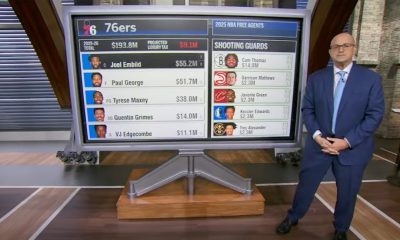
 Youtube3 weeks ago
Youtube3 weeks agoFREE AGENCY BREAKDOWN 🚨 What moves can the 76ers make? 🤔 | NBA Today



























